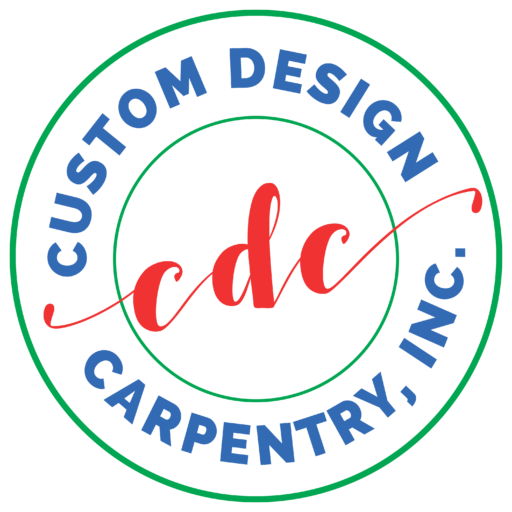By Custom Design Carpentry– Renovation & Remodelling
Thinking about giving your entire home a makeover? A whole home renovation is a big step but it’s also a chance to completely reimagine your space. Whether you’re hoping to open things up, make your home more energy-efficient, or just bring it into the modern era, this kind of remodel can dramatically change the way you live every day.
Of course, remodeling your whole house isn’t something you do on a whim. It takes planning, patience, and the right team to help bring your vision to life. In this guide, we’ll walk you through what to expect and how to make the process as smooth and successful as possible.

Start with a Clear Vision
Before you meet with a contractor or start picking out paint colors, take some time to really think about why you want to renovate. Are you tired of outdated finishes? Do you need more space for your growing family? Or are you simply ready to make your home more functional for your current lifestyle?
Getting clear on your goals will help you stay focused throughout the process. Try to prioritize what you need over what just looks good. That open-concept kitchen might be trending, but what matters most is how your home actually works for you every day. Think about what’s working and what’s not and use that as your starting point.
Make a Smart, Realistic Budget
Let’s be honest—renovating your whole house isn’t cheap. That’s why it’s so important to set a realistic budget from the beginning. Costs can vary a lot depending on the size of your home, the materials you choose, and how much structural or behind-the-walls work is involved.
Be sure to include more than just construction costs. Your budget should also cover design services, permits, inspections, and a buffer for surprises. (Because let’s face it—there are always surprises.) A good rule of thumb is to leave 10–20% of your budget as a cushion for unexpected issues like water damage or delays.
Work closely with your contractor or design-build team to figure out where it makes sense to splurge and where you can save without cutting corners.
Choose the Right Team
Renovating your entire home is a major job, and the team you hire can make or break the experience. Depending on how complex the project is, you might work with an architect, a designer, or a full-service design-build firm like Custom Design Carpentry Inc. (which means one team handles everything from design to construction).
This kind of setup helps keep communication smooth and everyone on the same page. You won’t have to juggle multiple contacts or worry about plans getting lost in translation. Plus, a team that knows the local codes, permits, and energy standards can help you avoid headaches later on.
Fix the Big Stuff First
When remodeling your whole house, it’s tempting to focus on pretty things like new floors and countertops. But before you get to the fun part, make sure the bones of your home are solid. That means checking things like your roof, plumbing, electrical, insulation, and foundation.
This is also the perfect time to make your home more energy-efficient—think new windows, upgraded HVAC systems, better insulation, and energy-saving appliances. These updates might not be flashy, but they can save you money and headaches down the road. And they’ll make your home a lot more comfortable to live in.
Rethink the Layout
One of the biggest perks of doing a full-home renovation is the chance to rethink how your space is laid out. Older homes often have chopped-up floor plans that don’t fit how people live today. If you’ve always wanted an open kitchen, a bigger living room, or a more functional flow between rooms, now’s your chance.
Talk with your design team about how you actually use your space day-to-day. Maybe you want to create a main-level suite for aging in place, or turn an unused formal dining room into a playroom or home office. You can also look at clever ways to add storage like built-in shelves or walk-in closets without making the house feel crowded.
Keep the Style Consistent
When you’re updating an entire home, it’s important to make sure all the spaces feel like they belong together. You don’t want your kitchen to feel like a completely different world from your living room.
This doesn’t mean everything has to match, but there should be a sense of flow. Try using similar materials, colors, or finishes throughout the house. That could be a consistent flooring choice, matching hardware, or repeating an accent color in different rooms. If your home has historic charm, a skilled designer can help blend the old and new in a way that feels intentional.
Be Ready for Some Disruption
There’s no sugarcoating it—renovating your whole home can be disruptive. Depending on how big the project is, you might need to move out for a while. If you’re staying in the house, expect dust, noise, limited access to some areas, and a revolving door of workers.
It helps to have a clear communication plan with your contractor. Regular updates, a shared schedule, and walk-throughs will keep you in the loop and reduce surprises. And if you’ll be living off-site, make sure you plan for temporary housing, storage, and work-from-home solutions if needed.
Enjoy the Finished Product
Once the work is done, take a moment to really appreciate the transformation. Your home should now reflect the way you want to live whether that means more comfort, better flow, or just a whole new look that makes you happy.
Before signing off, do a full walkthrough with your contractor. Make sure everything’s working properly and any small touch-ups get handled. Take photos to document the renovation, not just for resale someday, but because it’s a huge milestone worth celebrating!

FAQs About Whole Home Renovations
Q1: How long does a full-home remodel usually take?
It depends on the size of your home and how extensive the changes are. Most whole home renovations take between 4 and 12 months, including design, permitting, and construction.
Q2: Will I need permits for a renovation like this?
Yes, especially if you’re doing anything structural, electrical, or plumbing-related. Your contractor or design-build team will help handle the permit process.
Q3: Should I renovate or rebuild?
That depends on the condition of your home. If the structure and foundation are solid, renovation is usually more cost-effective. But if there are major issues or you want to make big layout changes, rebuilding might be the better choice.
Q4: Can I stay in my home during the renovation?
Sometimes, yes but not always. It depends on which areas are being worked on and how disruptive the construction will be. Many homeowners choose to move out temporarily during the most intensive phases.
Final Thoughts
Renovating your entire home is a big journey but it’s also one of the most rewarding. You get to take the house you already love and turn it into a space that truly works for your life, your family, and your future.
At Custom Design Carpentry Inc., we specialize in helping homeowners through every step of the process. From the first sketch to the final walkthrough, our design-build team is here to make your renovation smooth, collaborative, and exactly what you dreamed it would be.
Ready to reimagine your home from top to bottom? Let’s talk—schedule your consultation with us today and let’s create something beautiful together.
Author’s website- Custom Design Carpentry
Phone- (973) 980 6085


